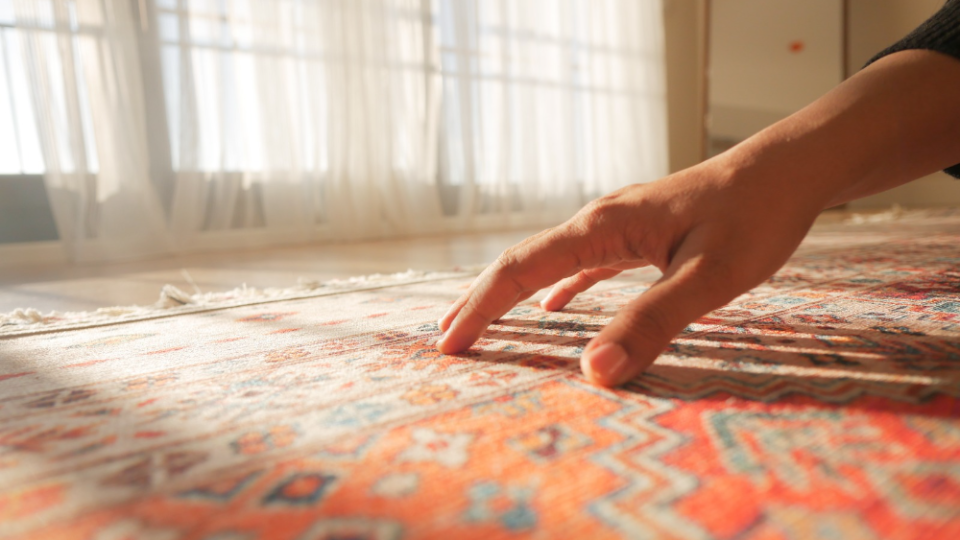Handmade rugs are not just floor coverings; they are intricate works of art that carry centuries of tradition and craftsmanship. Each rug tells a story, woven meticulously by skilled artisans who have honed their craft over generations. In this blog post, we’ll explore the fascinating world of handmade rug techniques, uncovering the artistry and dedication that go into creating these beautiful pieces.
The Foundation: Warp and Weft
At the heart of every handmade rug lies the warp and weft. The warp threads run vertically on the loom, forming the backbone of the rug, while the weft threads are woven horizontally, interlacing with the warp to create the fabric. The interaction between these two elements is fundamental to the rug’s structure and durability.
Knotting Techniques: The Soul of the Rug
Knotting is the defining characteristic of many handmade rugs. There are several knotting techniques, each with its own unique style and origin:
1. Persian Knot (Senneh Knot)
The Persian knot is known for its precision and tightness. It is asymmetrical, allowing for more intricate and detailed designs. This technique is prevalent in Persian and some Turkish rugs, producing a smooth and refined texture.
2. Turkish Knot (Ghiordes Knot)
The Turkish knot, or symmetrical knot, is more robust and less dense than the Persian knot. It is commonly used in Turkish and Caucasian rugs, providing a durable and thick pile that is ideal for high-traffic areas.
Weaving Techniques: The Heartbeat of Craftsmanship
Weaving techniques vary widely, influencing the rug’s appearance and texture. Some of the most notable techniques include:
1. Flat Weaving (Kilims)
Kilims are flat-woven rugs that do not have a pile. Instead, they are created by interweaving the warp and weft threads, resulting in a lightweight and reversible fabric. Kilims often feature bold geometric patterns and vibrant colors, making them perfect for adding a splash of personality to any space.
2. Pile Weaving
Pile weaving involves knotting the threads onto the warp, creating a raised surface or pile. This technique is used in many traditional rugs, including Persian, Turkish, and Oriental varieties. The density and length of the pile can vary, affecting the rug’s texture and feel underfoot.
3. Soumak Weaving
Soumak is a technique that combines elements of both flat weaving and pile weaving. It involves wrapping the weft threads around the warp, creating a textured, embroidered appearance. Soumak rugs are known for their durability and intricate patterns, often featuring detailed motifs and rich colors.
The Dyeing Process: Colorful Expressions
The colors in handmade rugs are achieved through natural or synthetic dyes. Traditional artisans often use natural dyes derived from plants, insects, and minerals. These dyes produce rich, vibrant hues that age beautifully over time. The dyeing process is an art in itself, requiring knowledge of local flora and a keen eye for color.
Cultural Significance: Weaving Stories and Traditions
Handmade rug techniques are deeply rooted in cultural traditions. Each region has its own unique methods and motifs, reflecting the history, beliefs, and environment of the people who create them. For instance:
- Persian Rugs: Known for their intricate floral designs and detailed medallions, Persian rugs often depict themes of paradise, nature, and mythology.
- Turkish Rugs: Featuring geometric patterns and bold colors, Turkish rugs often include symbols of protection, fertility, and luck.
- Moroccan Rugs: Characterized by their abstract designs and earthy tones, Moroccan rugs are often woven by Berber tribes and carry symbolic meanings related to life events and natural elements.
The Modern Renaissance: Embracing Tradition in Contemporary Design
Today, there is a renewed appreciation for handmade rugs. Interior designers and homeowners alike value the uniqueness and craftsmanship of these pieces. Modern artisans continue to innovate, blending traditional techniques with contemporary designs to create rugs that are both timeless and trendy.
Conclusion
The art of weaving handmade rugs is a testament to human creativity and perseverance. Each rug is a labor of love, representing hours of meticulous work and centuries of tradition. By understanding the techniques and cultural significance behind these beautiful pieces, we can better appreciate the artistry and dedication that go into their creation. Whether you’re a collector, a design enthusiast, or simply someone who loves beautiful things, handmade rugs offer a tangible connection to the rich tapestry of human history and craftsmanship.

